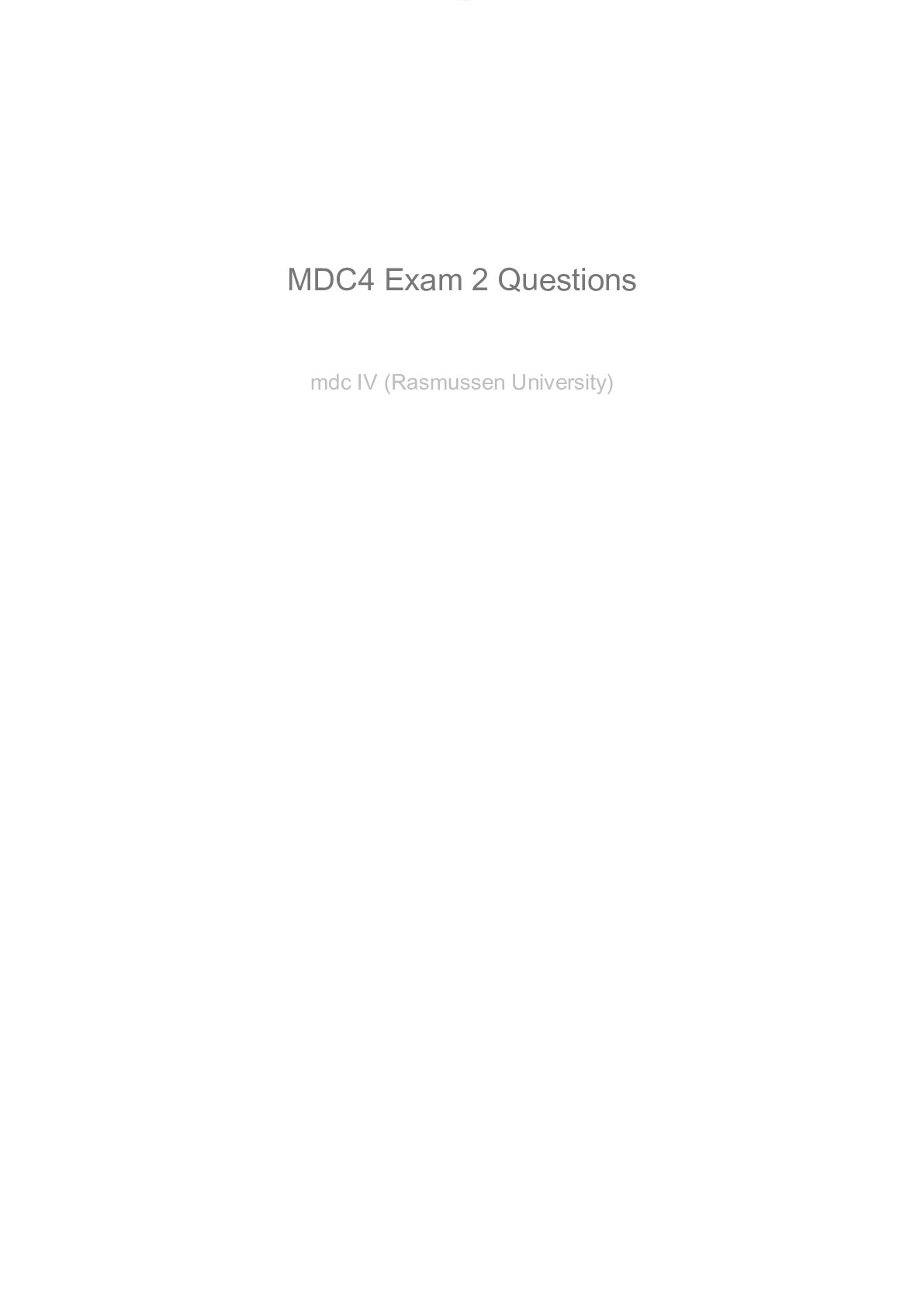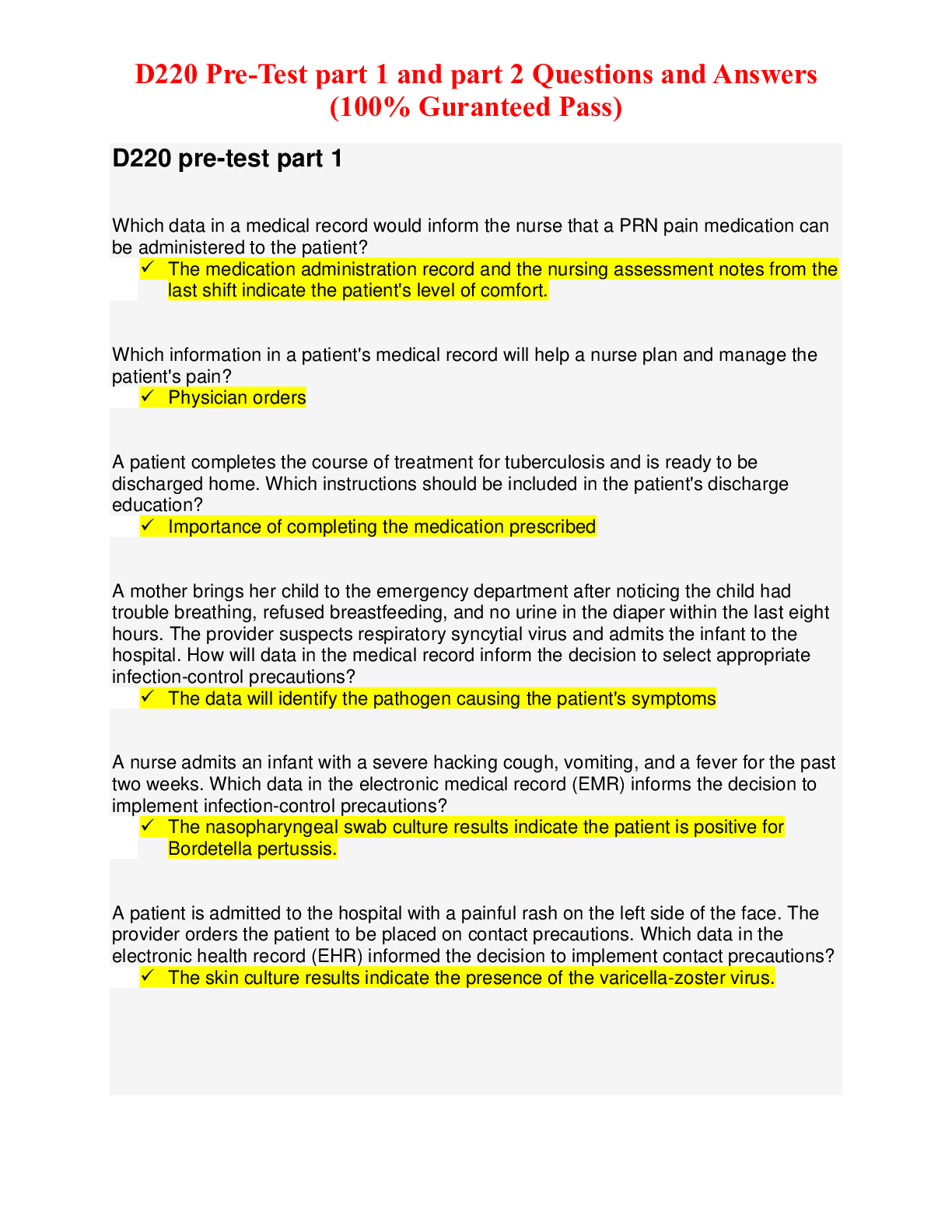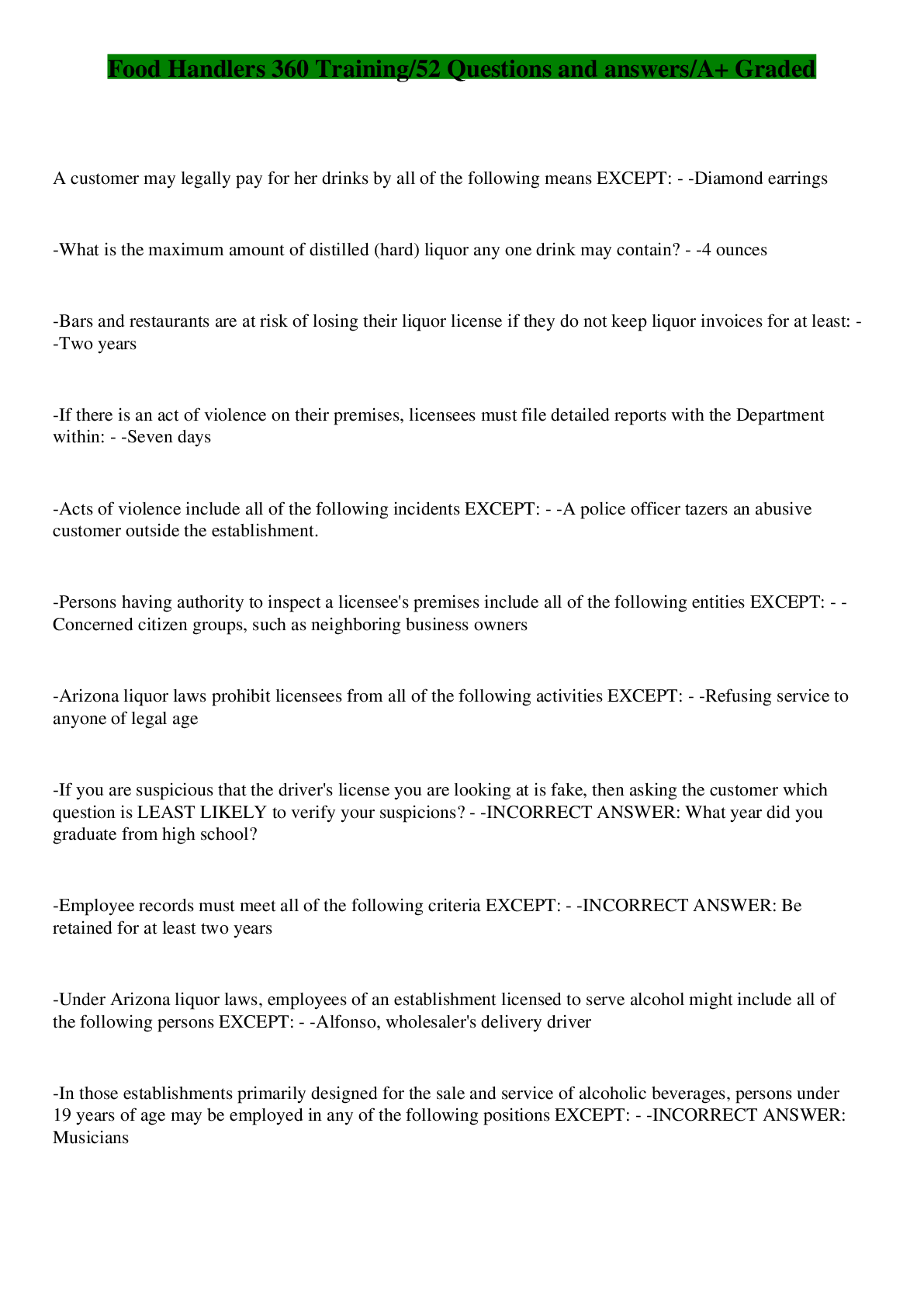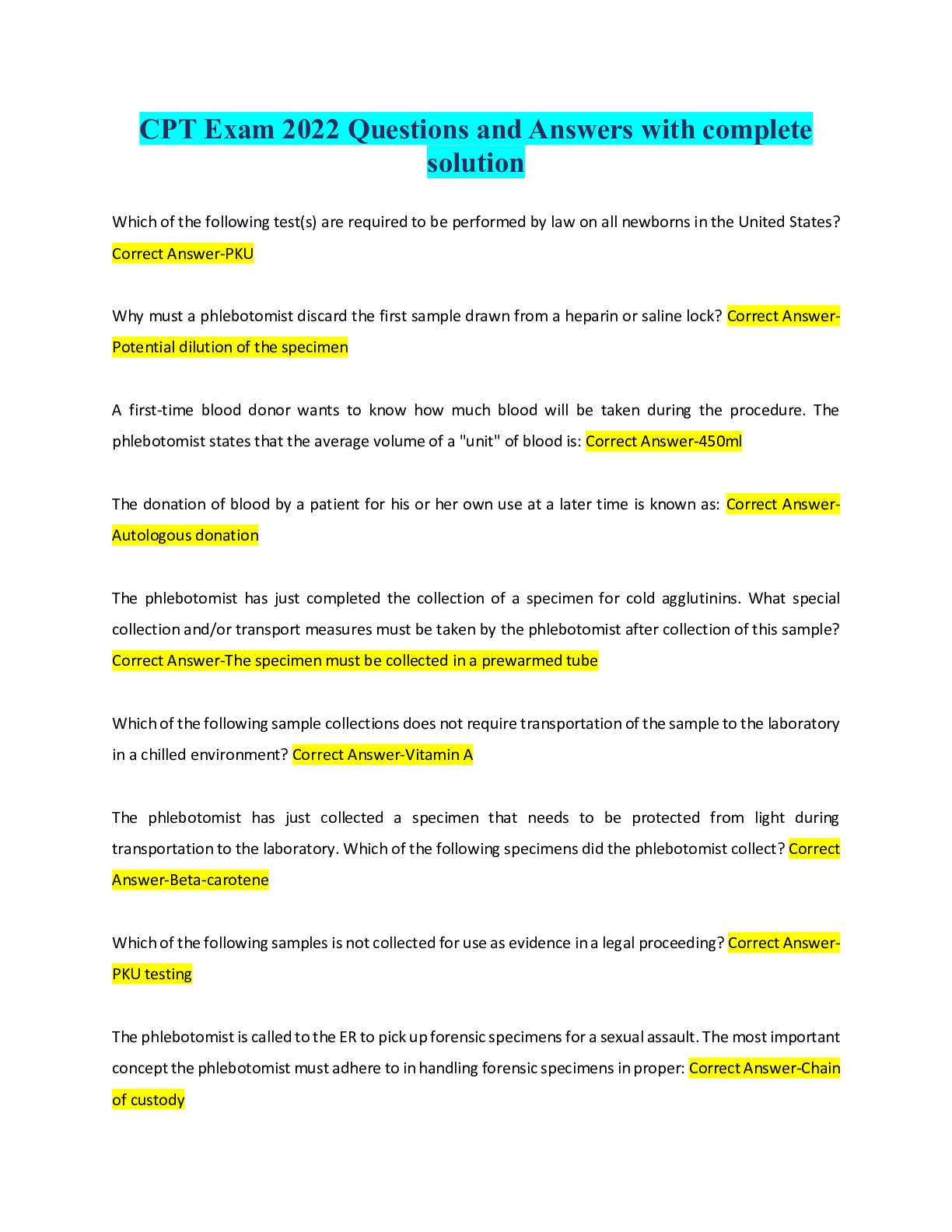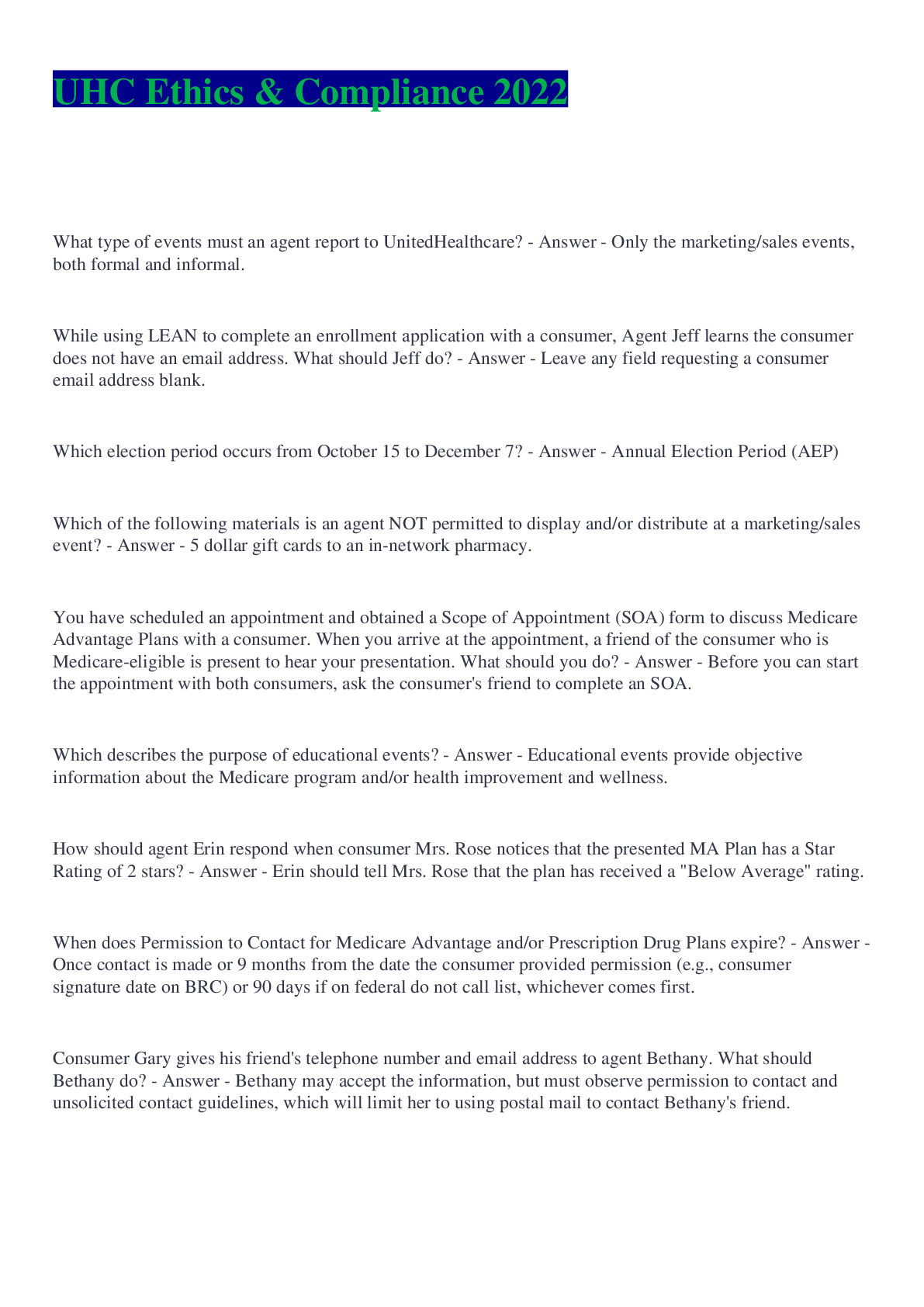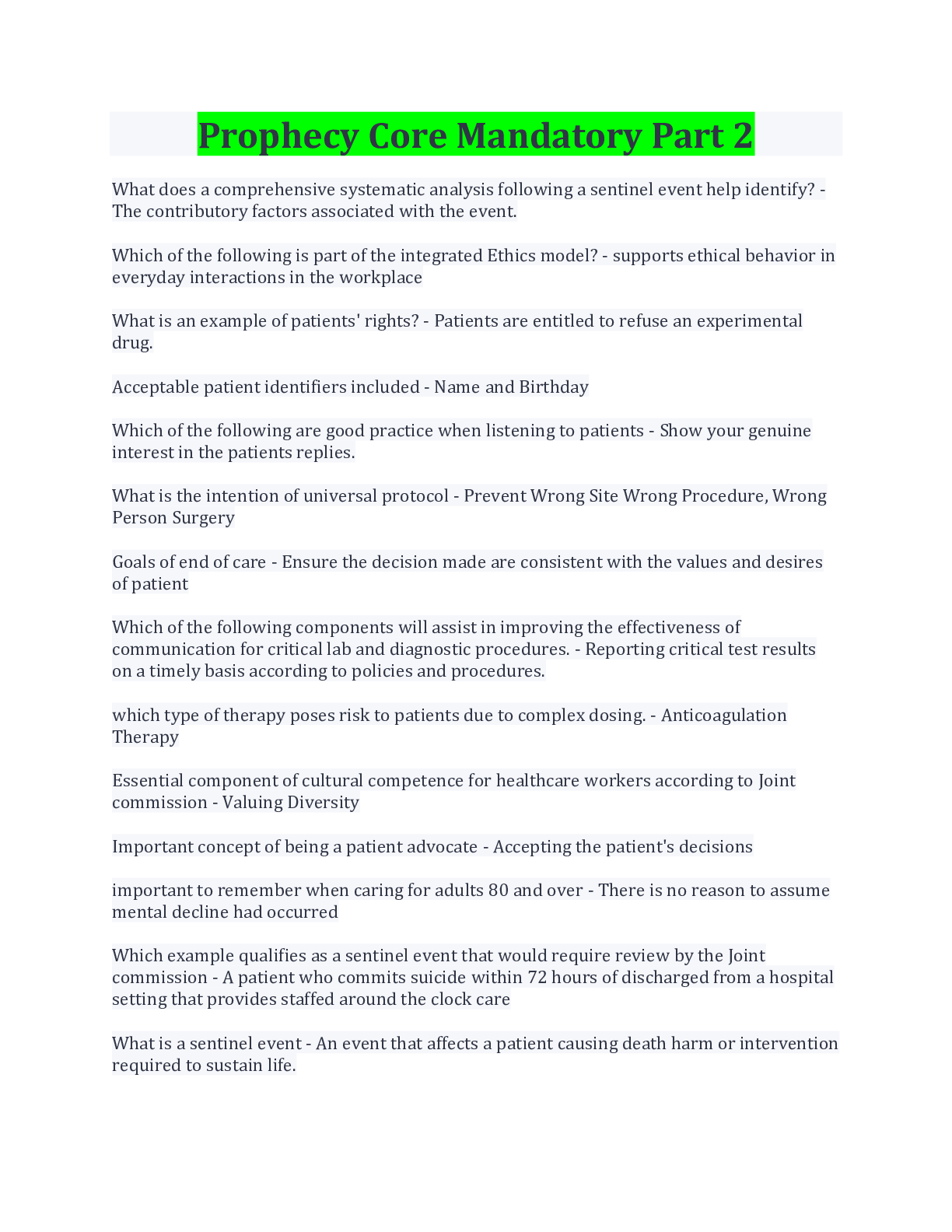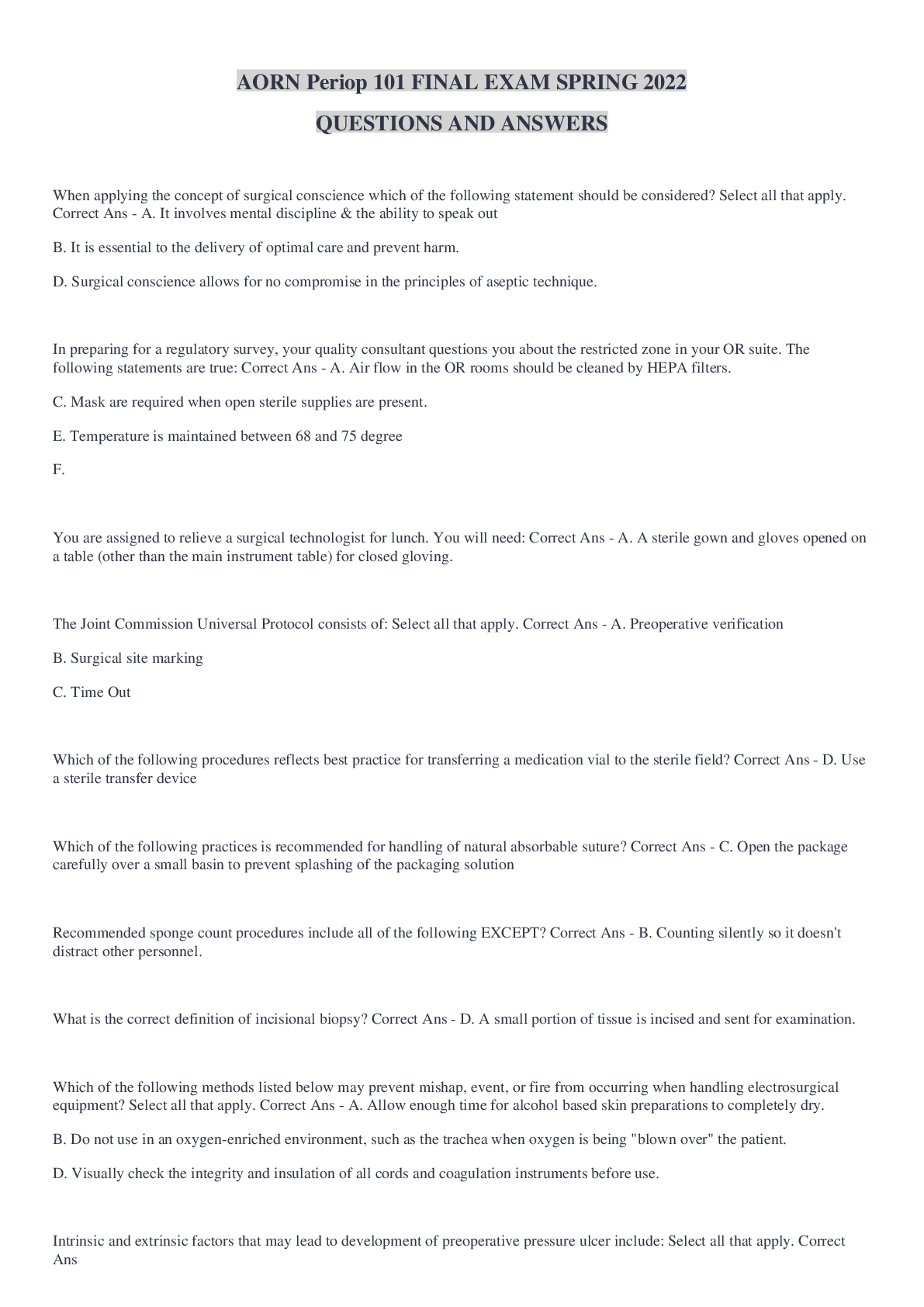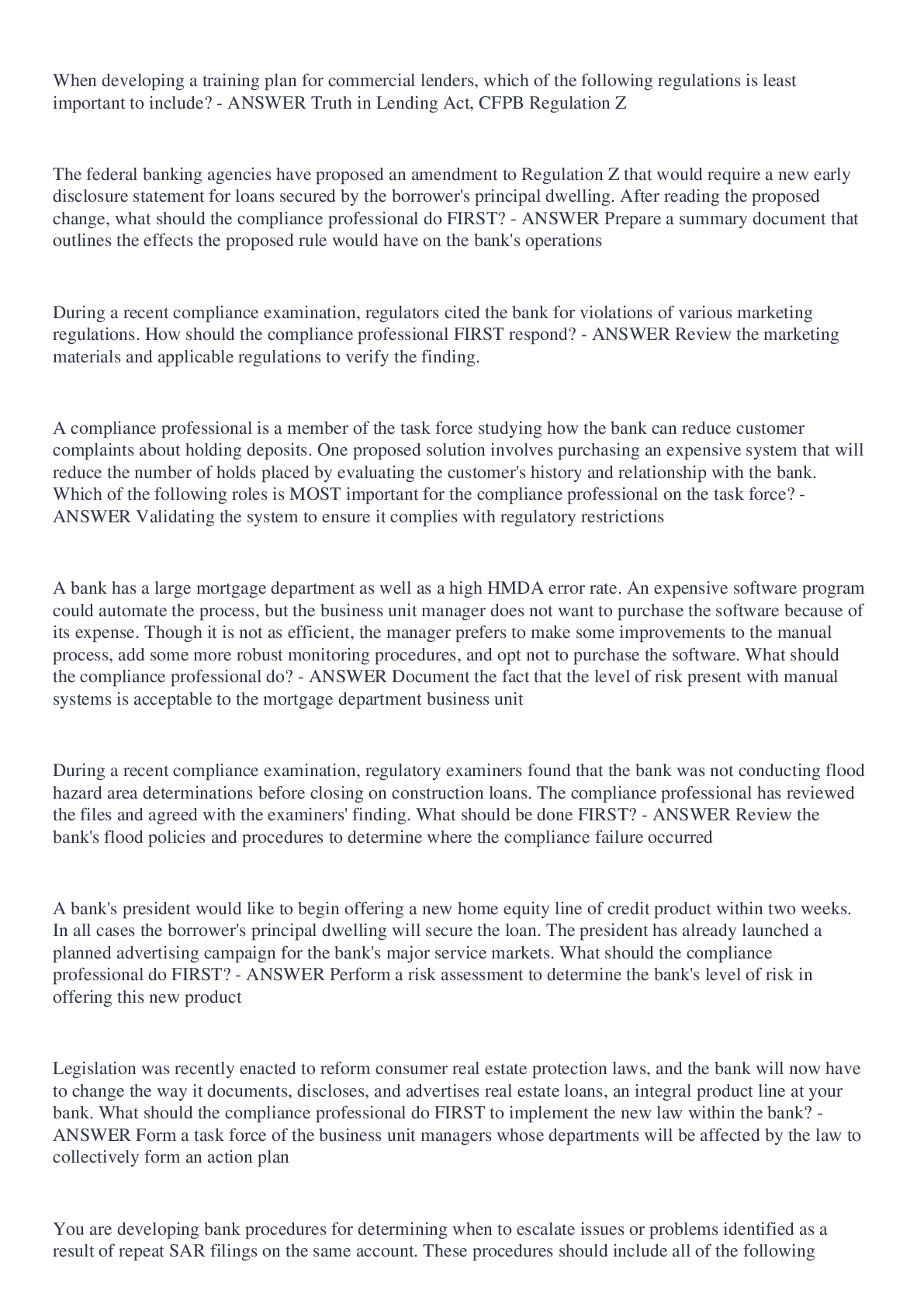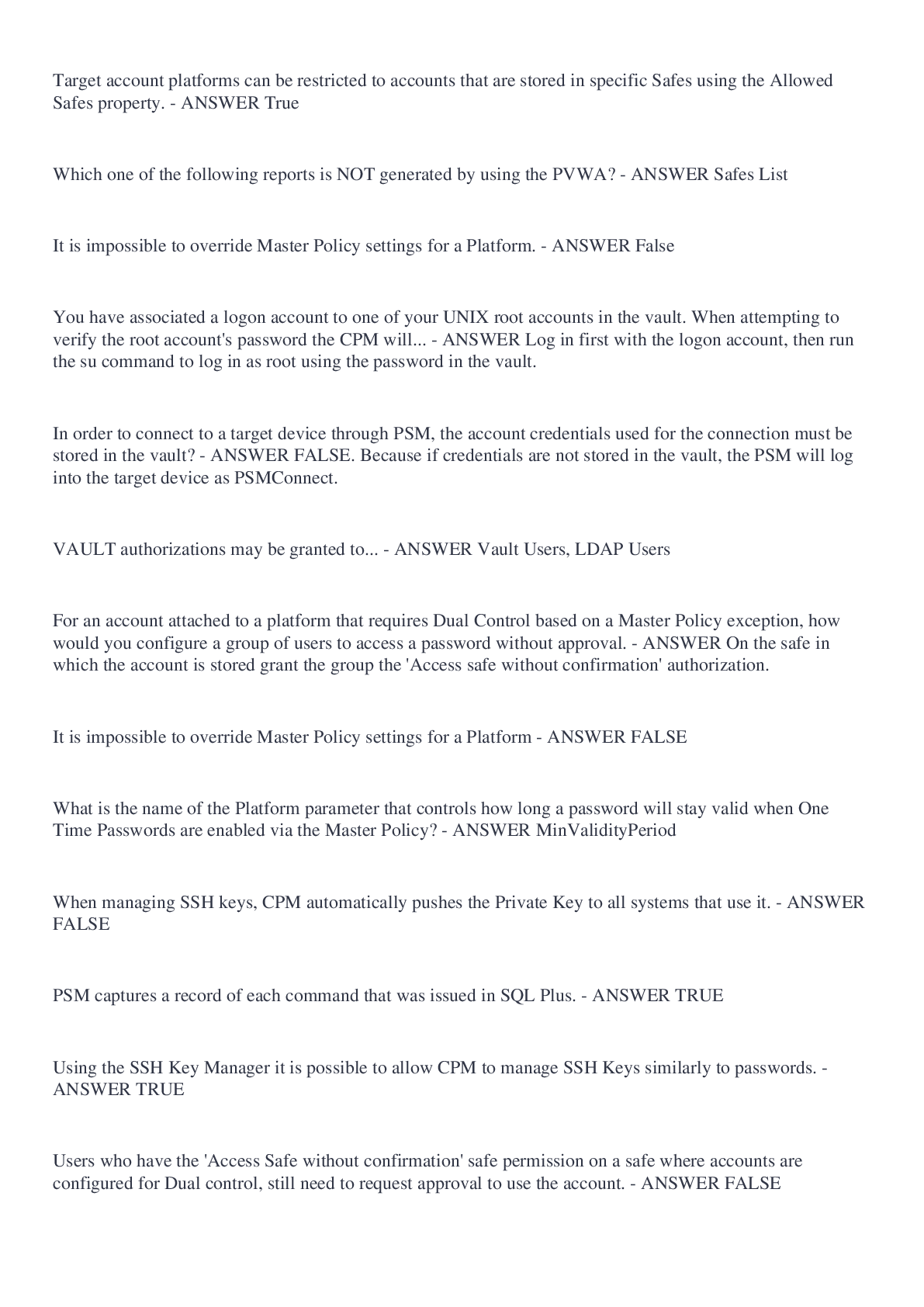LETRS UNIT 2 Questions and Answers.
Document Content and Description Below
LETRS UNIT 2 Questions and Answers Assessing phonological skills is almost never appropriate after a child has completed first grade. - Correct Answerfalse Phonemic awareness is difficult to m... easure directly as an isolated skill. - Correct AnswerTrue Which kinds of tasks are the primary focus of phonological skills assessments in grades k-1? - Correct Answerphoneme segmentation and blending Kelsey is in grade 2. Previously a strong reader, she has now fallen behind. She reads grade-level texts haltingly, struggling to recognize words with blends. Which phonological task would she likely struggle with? - Correct Answer"Say crate. Now say crate but don't say /K/" and "Say bask. Now say bask but don't say /s/. Students in Ehri's prealphabetic phase need instruction in basic oral language skills before manipulating phonemes. - Correct AnswerTrue Sound chaining should begin with substituting the middle sounds and end sounds in a word, as these are most difficult. - Correct AnswerFalse Which of the following principles are important for teaching phonological skills in particular? - Correct AnswerFocus students' attention on speech sounds before focusing on letters, include all English phonemes in instruction. Which activities work with students at the early phonological awareness level? - Correct Answerhaving students identify rhyming words in texts you read aloud, having students clap or tap to count the syllables in a word you say, saying a two-syllable word then asking students to delete one syllable and say the word that results. A colleague is going to start beginning sound chaining activities with students at the basic phonemic awareness level, using colored blocks to represent sounds. What is the most important guideline to follow? - Correct AnswerHave students add, change, delete, or move only ONE sound at a time What is the primary purpose of doing sound chaining activities and minimal pairs activities with students? - Correct Answergetting them to attend carefully to specific phonemes, one at a time. Which of the following pairs of words is more difficult for students who are struggling with phonology to discriminate, segment, and blend? - Correct Answer"chomp" and "lump" because the final sounds are consonant blends. Which series of activities represents the best instructional progression for children at the early phonological awareness level? - Correct Answerdelete syllables from compounds, clap syllables in three-syllable words; divide words with onset-rime. In early phonological awareness alliteration exercises, how important is explaining that different letters make the same sound - Correct AnswerNot important; students don't need to know how the words are spelled Which English phonemes can be omitted from phonological awareness instruction? - Correct Answernone; all should be taught Which is the best approach to planning phonological awareness instruction? - Correct AnswerPlan a brief session (5-10 minutes) each day. What is the first and primary focus of teaching phonemic awareness? - Correct Answerteaching students specific phonemes and how they feel in the mouth Classroom phonemic awareness exercises should be - Correct Answermultisensory, involving hearing, sound, touch, and movement What item would you use to show students how to articulate specific phonemes? - Correct Answera mirror Spanish has 22 phonemes represented by 27 symbols, compared to English's 44 phonemes and 26 symbols. - Correct AnswerTrue The variations common in African American English are predictable and governed by rules. - Correct AnswerTrue Which of the following occurs as a result of coarticulation? - Correct AnswerAllophonic variations, in which we pronounce individual phonemes differently from how would pronounce them in isolation and misspellings of words that are, in fact, phonetically logical Which of the following misspellings likely results from confusion about unaspirated or deaspirated stop consonants? - Correct Answerspelling skip as "sgip" In which group of words does a tongue flap create significant differences between American and British pronunciations? - Correct AnswerCattle, City, Metal "Trick-or-treating" is misspelled "chicrchetit." Why did this student begin the words "trick" and "treat" with the letters "ch"? - Correct AnswerThe sound at the beginning of these words sounds like /ch/ due to the allophonic variation of affrication; /t/ is followed by /r/. Which allophonic variation is responsible for the misspelling of the word "candy" as "cade"? - Correct Answernasalization of the vowel Which allophonic variation is responsible for the misspelling of the word "sick" as "sig"? - Correct Answeraspiration of the vowel Why does this student consistently misspell "get" as "git"? - Correct AnswerShe likely has a strong dialect and says the word this way when speaking. How might a student misspell the word "try" if she is confused by the allophonic variant of affrication? - Correct AnswerChri For whom is affrication typically a problem? - Correct Answerbeginning readers and spellers What would you say to a student who misspelled "better" as "bedr"? - Correct Answer"The middle sound in the word sounds like /d/, but we spell it with the letters 'tt'." What would you say to a student who spelled "shouted" as "shoudid"? - Correct Answer"The ending sounds in the word sound like /d/-/i/-/d/, but 'shout' is spelled with 't' and the suffix is always spelled 'e-d'. How many nasal sounds are in the word "mink"? - Correct Answer2 How might a student misspell the word "slant" if she is confused by nasalization? - Correct Answerslat When people confuse sounds based on aspiration, the cause is: - Correct Answera difference in airflow. A student who misspells the word "stop" due to the allophonic variation of aspiration might spell it which of the following ways? - Correct Answersdop An allophonic variation is: - Correct Answera sound that, when spoken in a word, is altered by its surrounding sounds. Which of the following is true about coarticulation? - Correct AnswerIt causes allophonic variations. How does the misspelling of "then" as "din" illustrate common AAE patterns? - Correct AnswerThe /d/ sound is substituted for the fricative /th/. Which misspelling illustrates a reduction of sounds in ending consonant blends? - Correct Answer"fras" for "friends" How does the misspelling of "brother" as "brudr" illustrate a feature of Spanish? - Correct AnswerSpanish has a voice /th/ phoneme, represented by the letter "d". How do you explain the spelling "japi" for "happy"? - Correct AnswerThe student has substituted Spanish spellings for the sounds /h/ and /e/. The differences between English and Spanish phonemes represent significant challenges to Spanish ELs: - Correct Answerin both oral and written English. Spanish Els face challenges: - Correct Answerin learning new phonemes and new phoneme-grapheme pairings. Understanding the differences between Spanish and English phonemes and phoneme-grapheme pairings is important to teachers because: - Correct Answerit will help them teach their Spanish Els more effectively, they will be alert for the phoneme substitutions used by their Spanish Els when the students are speaking, they will be aware of how the phoneme substitutions used by their Spanish Els impact their reading and spelling skills. Comparing the number of Spanish phonemes to English: - Correct Answerthere are fewer phonemes in Spanish. Students whose first language is Spanish will benefit from: - Correct Answerbeing directly and intentionally taught the English phonemes that do not appear in Spanish. English vowels are easier for students to pronounce and write than consonants. - Correct AnswerFalse What makes r-controlled vowel sounds so confusing for students? - Correct AnswerThe r takes over the preceding vowel sound. Which of the following sounds is considered a front vowel? - Correct Answer/a/ (long a) Which of the following vowels require that the mouth shift position during production of the sound? - Correct Answer/oi/ and /ou/ Which of the following vowel sounds would be classified by a linguist as "tense" vowels? - Correct Answer/e/ and /yu/ Adults often miscount the number of phonemes in a word because they tend to recall how a word looks in print and count not the sounds. - Correct AnswerTrue Which of the following sounds is an affricate, meaning it combines features of fricatives and stops? - Correct Answer/ch/ Which of the following pairs are consonant sounds that students frequently confuse? - Correct Answer/t/ and /d/ and /m/ and /n/ Which of the following misspellings is phonetically accurate and does not indicate phonemic confusion? - Correct Answerwriting "butn for button and written 'kitn' for kitten In many instances, two different consonant phonemes in English are formed the same way in the mouth, but one is voiced and the other is unvoiced. - Correct AnswerTrue Adults often miscount the number of phonemes in a word because they tend to recall how a word looks in print and count the letters, not the sounds. - Correct AnswerTrue Which of the following sounds is an affricate, meaning it combines features of fricatives and stops? - Correct Answer/ch/ Which of the following pairs are consonant sounds that students frequently confuse? - Correct Answer/t/ and /d/ AND /m/ and /n/ Suppose a student writes "charp" instead of "sharp". What phonological error is the likely cause? - Correct Answersubstituting an affricate sound for a fricative sound Suppose a student writes "vis" instead of "this". What phonological error is the likely cause? - Correct Answerconfusing two different voiced fricatives Suppose a student writes "mob" instead "mop". What phonological error is the likely cause? - Correct Answersubstituting a voiced stop for an unvoiced stop Phonemic awareness instruction for young learners is most beneficial when linked with phonics instruction. - Correct AnswerTrue The inventory of phonemes used in Spanish is nearly identical to that used in English. - Correct AnswerFalse A third-grade teacher wants to determine whether any of her students are risk for reading failure. She should use a screening measure that assesses which of the following? - Correct AnswerTheir ability to perform advanced phonemic awareness tasks How much phonological awareness training should be done with students for maximum effectiveness? - Correct Answera few minutes a day, several days per week Which of the following changes typically take place once a child has grasped the alphabetic principle? - Correct AnswerSpelling becomes more phonetically accurate, attempts to decode text focus more on blending sounds. Which of these advanced phonemic awareness skills do children typically develop last? - Correct AnswerThe ability to reverse the first and final sounds in a word Even after first grade, skills such as phoneme segmentation and blending of single-syllable words without consonant blends are good predictors of reading ability. - Correct AnswerFalse Students' ability to acquire phonemic awareness is not dependent on which of the following factors? - Correct Answerword comprehension Which of these tasks could a student at the early phonological awareness level perform? - Correct Answerdetermining whether cat and kiss begin with the same sound and clapping/counting the syllables in the word pencil If a student analyzes the sounds and syllables in a word, it is easier for the student to store the word in semantic memory. - Correct AnswerTrue Read the following list of classroom activities. Select the one that targets phonological awareness only, without attempting to address other language skills. - Correct AnswerMs. Chang says a word and has students repeat it, clap for each syllable, and count the syllables. Which of these skills should not be a direct focus of classroom instruction? - Correct Answerphonological working memory (PWM) and rapid automatic naming (RAN) The term coarticulation means the ability to: - Correct Answersay the phonemes within a syllable so that all of the segments are seamlessly joined. A student with general phonological awareness can learn to read fluently, even if the student has not yet developed awareness of speech sounds at the phoneme level. - Correct AnswerFalse If a student analyzes the sounds and syllables in a word, it is easier for the student to store the word in semantic memory. - Correct AnswerTrue Read the following list of classroom activities. Select the one that targets phonological awareness only, without attempting to address other language skills. - Correct AnswerMs. Chang says a word and has students repeat it, clap for each syllable, and count the syllables. Which of these skills should not be a direct focus of classroom instruction? - Correct Answerphonological working memory (PWM) and rapid automatic naming (RAN) How many phonemes are there in the word "cloud"? - Correct Answer4 Which of these words are divided by onset-rime? - Correct AnswerThe words "sk-imp" and "str-eet" are divided by onset-rime. How many syllables are there in the word "phonological"? - Correct Answer5 The phonological processor allows us to do which of the following? - Correct Answerperceive sounds, remember sounds, interpret sounds, produce speech The written representation of a speech sound is known as a grapheme. - Correct AnswerTrue Providing direct, detailed phonemic awareness instruction is only necessary for students who struggle with reading. - Correct AnswerFalse Which of the following is a necessary prerequsite to being able to read words? - Correct Answerperceive individual speech sounds, produce individual speech sounds, manipulate individual speech sounds It is necessary that students know how speech sounds look and feel when produced as well as how they sound. - Correct AnswerTrue Phoneme - Correct Answerin any language, the smallest unit of sound used to build words Phonemic awareness - Correct Answerconscious awareness that words are made up of segments of our own speech that are represented with letters in an alphabetic orthography. Phonology - Correct AnswerThe rule system in a language by which phonemes can be sequenced, combined, and pronounced to make words. Phonetics - Correct AnswerThe student of the sounds of human speech; articulatory phonetics refers to the way the sounds are physically produced in the human vocal tract. Phonological Processing - Correct AnswerMultiple functions of speech and language perception and production, such as perceiving, interpreting, storing (remembering), recalling or retrieving, and generating the speech sound system of a language. Phonological awareness - Correct AnswerConscious awareness of all levels of the speech sound system, including word boundaries, stress patterns, syllables, onset-rime units, and phonemes. [Show More]
Last updated: 2 weeks ago
Preview 1 out of 7 pages

Reviews( 0 )
Document information
Connected school, study & course
About the document
Uploaded On
Feb 01, 2023
Number of pages
7
Written in
Additional information
This document has been written for:
Uploaded
Feb 01, 2023
Downloads
0
Views
208
















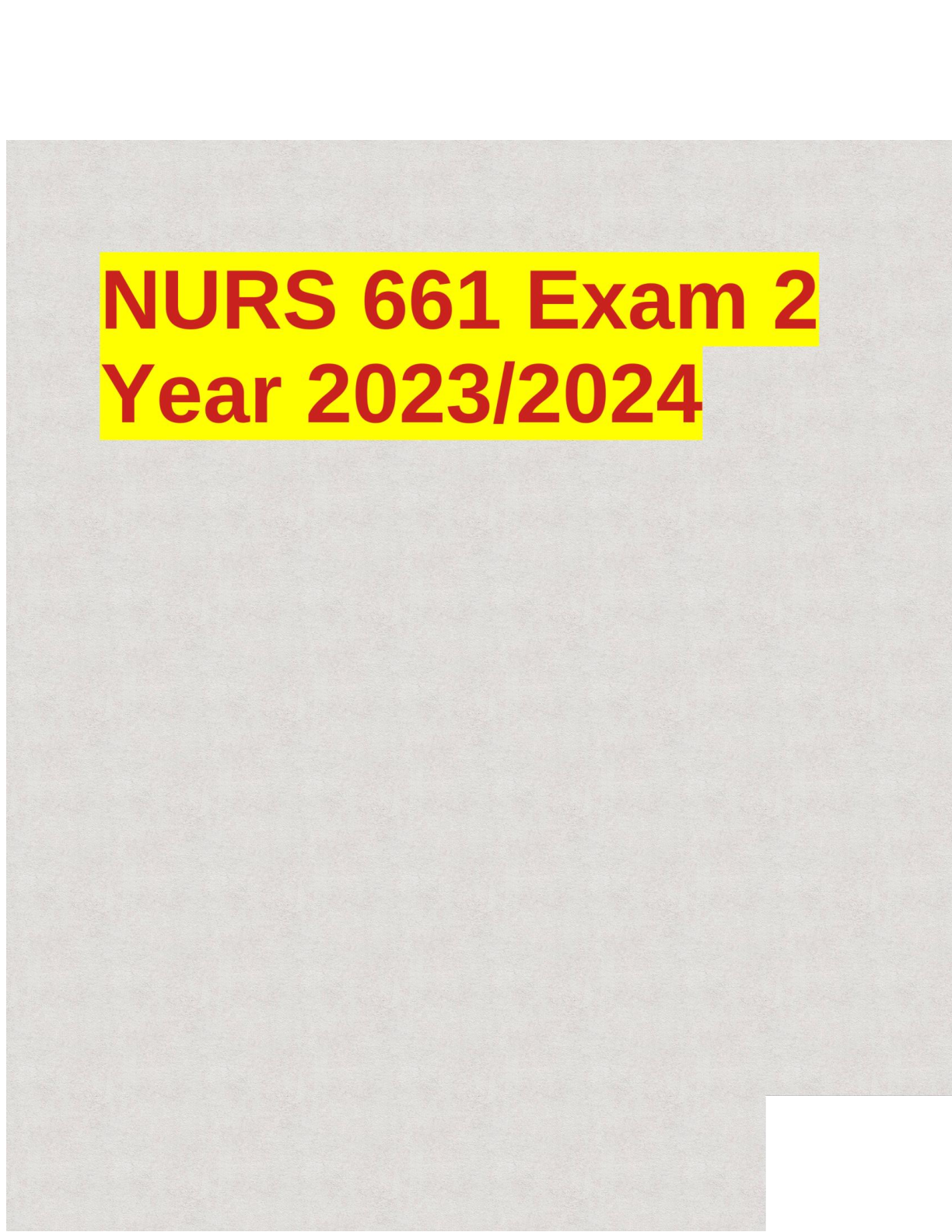


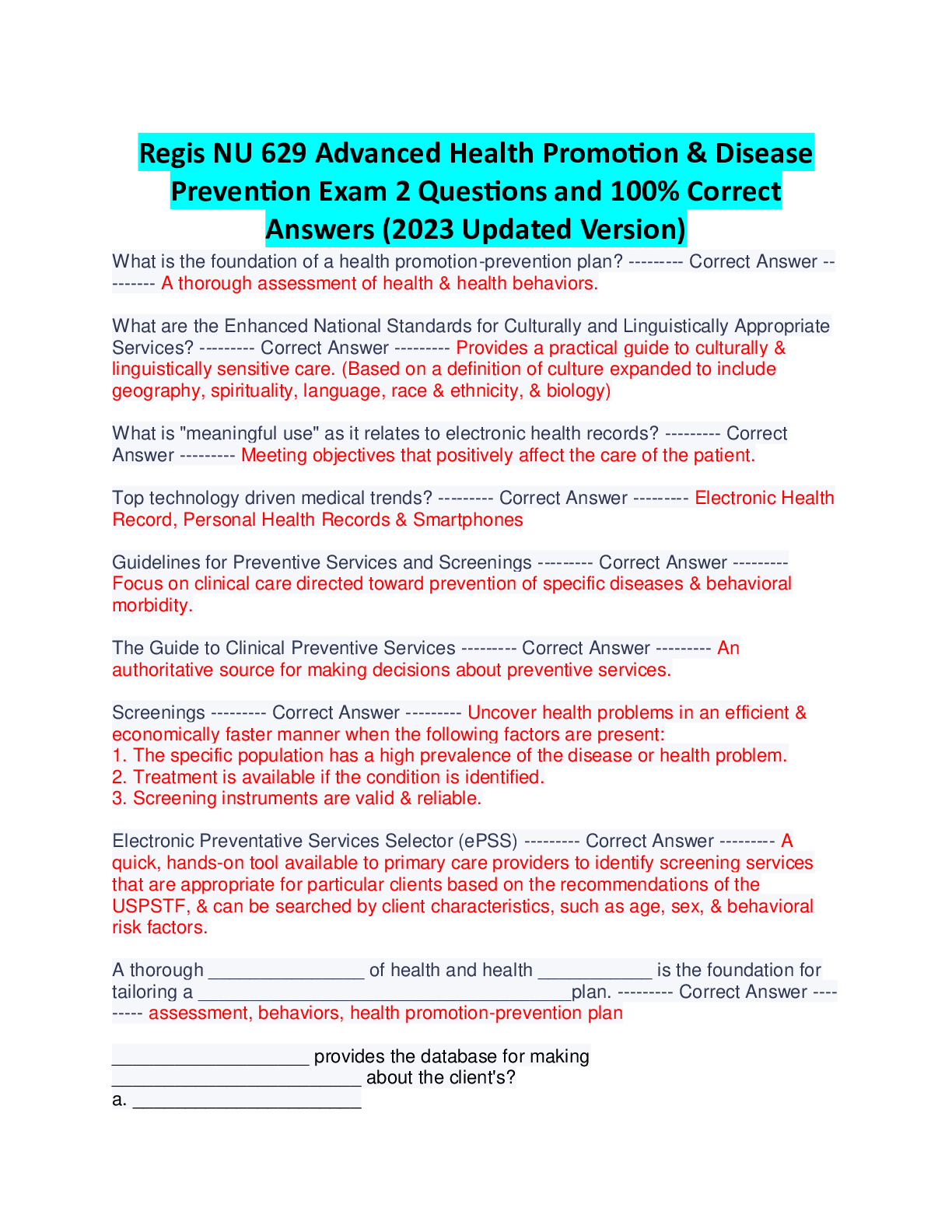

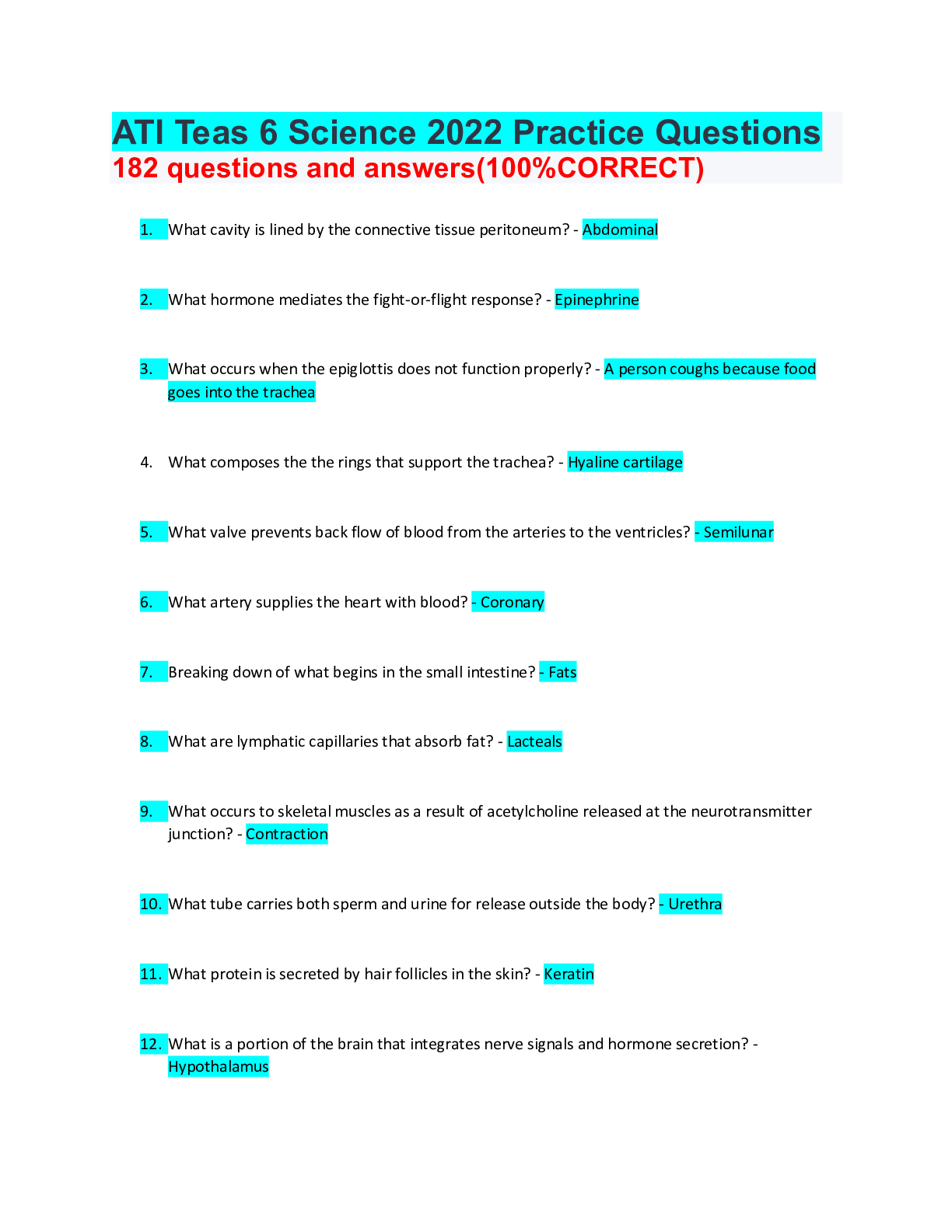
.png)
